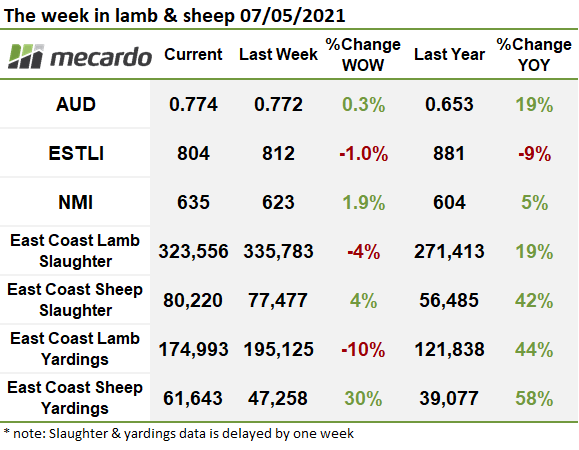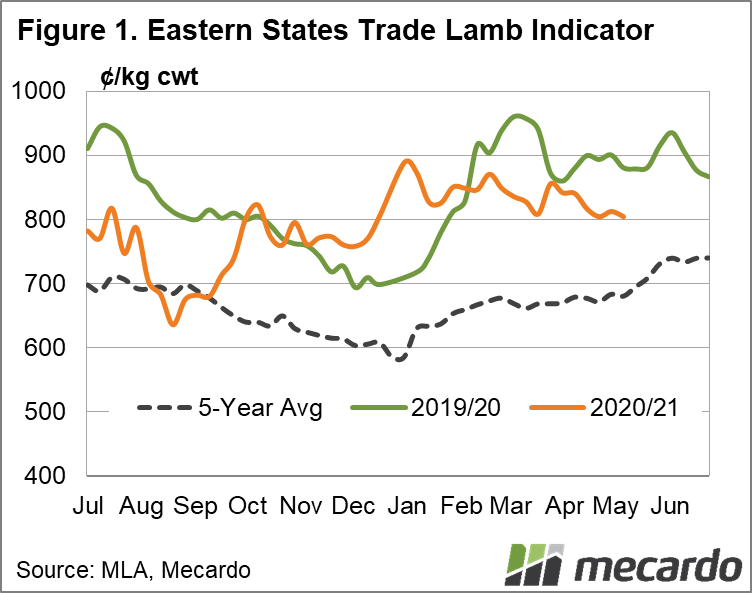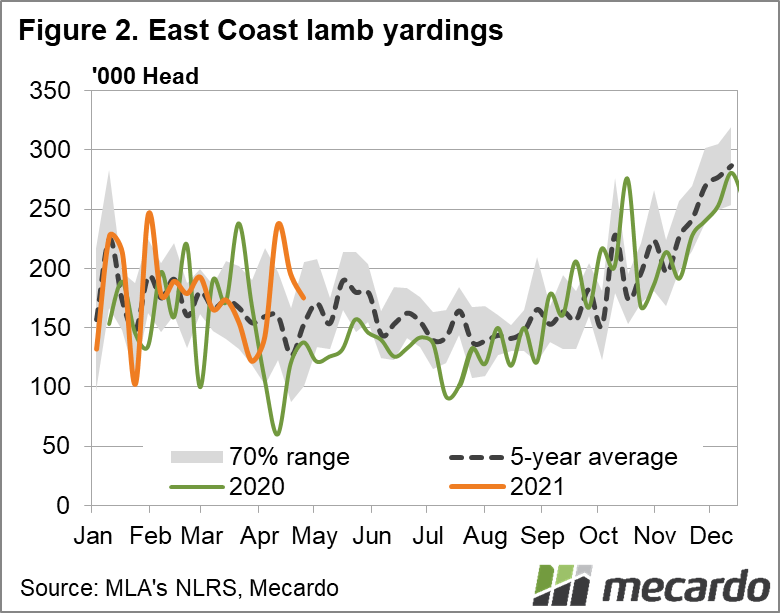It was a wet old week across much of the country, with many west and east sheep areas enjoying a top-up of rain. Despite this, the lamb market was broadly weaker as continued strong slaughter volumes impact the market.
East coast lamb yardings fell 10% for the week ending the 30th of April compared to the week prior to see 174,993 head yarded. Throughput in Victoria remains elevated, with yardings last week 17% higher than the same week in 2020, and 49% higher than the seasonal average. Sheep throughput jumped 30% in the east last week to levels 10% higher than the five-year seasonal average. South Australia was a large contributor, with over 11K sheep yarded.
Lamb processing slowed down slightly in South Australia and NSW last week to see a 4% week on week drop in total east coast lamb slaughter. Some of the space in NSW was filled with more sheep. Over 80K head of sheep were processed in the east coast last week, which was 16% below the five-year seasonal average but 42% higher than the same week last year.
The Eastern States Trade Lamb Indicator (ESTLI) lost 8¢ on the week to settle at 804¢/kg cwt. The National indicators for Merino lambs lost 21¢, while the other lamb categories proved more resilient in this weeks market. Heavy lambs lost 7¢ to 770¢/kg cwt which is 12% below the same time last year. The Restocker Lamb Indicator shed 9¢, but remains just 5% below year-ago levels
Mutton made small gains on last weeks price with the national indicator lifting 12¢ to 635¢/kg cwt.
Over in the West, the lamb market had mixed results week on week. Light lambs, restocker and heavy lambs all picked up an extra 20 to 28¢. The Western Australian Trade Lamb Indicator lost 17¢ and at 715¢/kg cwt sits 8% below the same time last year. With plenty of rain in the west over the week, expect a more confident market in the weeks ahead.
The week ahead….
While most state-based lamb indicators currently sit below levels of the same time last year, supply is well up. There are positive reports in our export markets though, as Angus Brown reported on Mecardo earlier this week. Not only are lamb exports to the US well up on last year, but imported lamb prices have also recovered from the 2020 lows. This strong demand should continue to support lamb prices in the medium term.
Have any questions or comments?
Click on graph to expand
Click on graph to expand
Click on graph to expand
Data sources: MLA, NLRS, Mecardo




